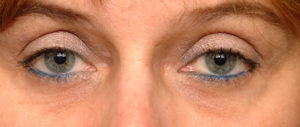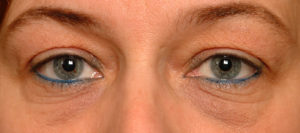As we age, most people will develop lower eyelid prominences otherwise known as lower eyelid bags. Ini addition to the excess skin thaty develops, a big part of these bags is caused by fat coming out from underneath the eye. In plastic surgery, we call this ‘herniated orbital fat’ which has alway been believed to be caused by the weakening of the tissue that runs between the eyelid and the underlying rim of orbital bone. (known as the orbital septum) Much like a hernia, this support tissue becomes weak and allows some of the fat which wraps around the eyeball to come protruding out. As a result, lower eyelid surgery (lower blepharoplasty) has traditionally involved removing this overhanging fat as well as the extra skin to make this area look better and smoother.
A recent study published in the September 2008 issue of the journal, Plastic and Reconstructive Surgery, looked at the progressive development of these lower eyelid fat prominences to try and explain why we see with age. Their objective was to evalute more closely the long-held belief of a fat hernia under the eye. Through MRI studies of forty patients of different ages, measurements were taken of the eye, fat amd surrounding bone. What they found was that the eyeball stayed in the same position throughout life but the amount of fat around the bottom part of the eye actually increased as we age. These measurements suggest that as we age there is actual fat expansion below the eye that accounts for the development of the lower eye bags.

Dr. Barry Eppley
Indianapolis, Indiana



